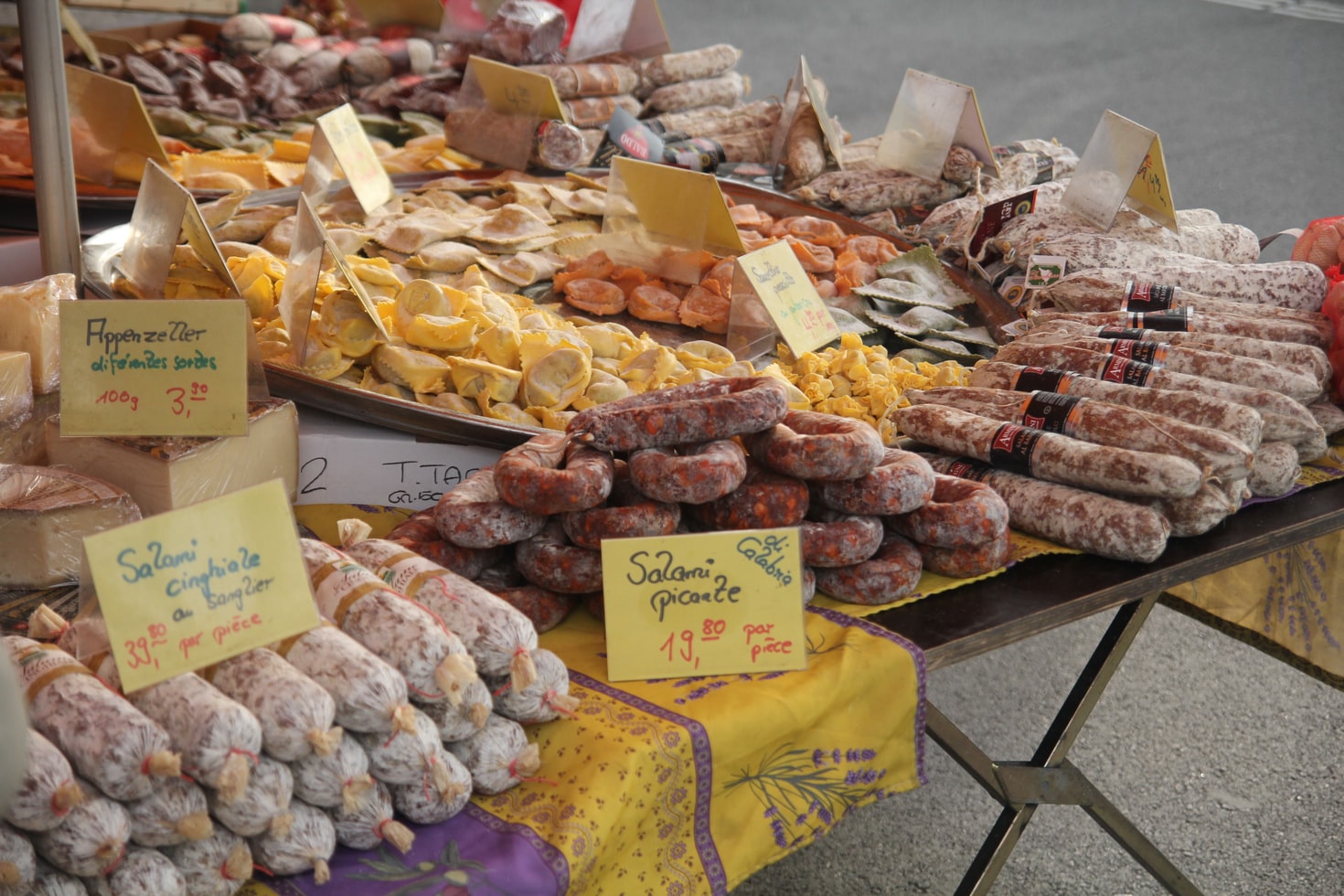Salami is a sausage that was invented in Italy and then completely trivialised in the USA. In the original idea, it was made from a mixture of minced pork and salt that was carefully air-dried in a casing, but mass production and Americans’ passion for the fastest and most ready-to-eat meal possible made it into a half-finished sandwich and pizza product.
The history of salami from ancient Rome to the present day
The name “salami” comes from the Italian word salare, which means “to salt”. In general, this word does not refer to a specific type of sausage, but to an entire “family”, a term describing any type of cased meat product. Like many other Italian products, salami has a long history, dating back before the heyday of ancient Rome. Over the centuries, many variations on the theme of this type of sausage have appeared, each region different and sometimes even more than one.
The history of salami: the origins
Pork has been eaten in Italy since the founding of the state. Originally the animals were raised solely to meet the needs of the family or village. Only in Etruscan times did the first forms of non-nomadic breeding begin to develop, for example for trade. An interesting discovery was made by archaeologists, during the excavations of Forcello (Vth century BC) in the province of Mantua, 50 000 animal bones were found, 60% of which were pigs. Examination of these bones showed that the animals were about 2-3 years old, but the bones of their hind legs were almost entirely absent. This is probably when sausage products were invented!
The history of salami: Roman times
During Roman times, pork hams were very popular. It was the prized pork product and was the protagonist of numerous social and festive events.
The history of salami: the Middle Ages
In times of barbarian invasions, pigs were one of the most important resources for village peasants. Pork, ham, and pancetta were sometimes equated with currency. During the Middle Ages pig grazing was so important that the size of forests was measured not by their extent, but by their ability to feed pigs.
The history of salami from ancient Rome to the present day
Salami is older than you might think.
The history of salami: the Renaissance
As the centuries passed, pig farming and the consumption of pork products became ever more important. The art of gastronomy developed and pork made its appearance on the most luxurious banquet tables, until the 19th century when the first gastronomic workshops and sausage shops opened their doors.
From the 12th-17th centuries, pork processing became a major focus in Italy, and the whole country began to consume and process meat at a rapid pace. During this period a special profession appeared: the Norcino (butcher specialising in pigs from Norcia). Norcini united in guilds and fraternities, inventing and preparing new sausages. Within a few years these associations became very famous and Pope Paul V in 1615 recognised the Fraternity of Norcini, dedicated to Saints Benedetto and Scholastica.
At that time there were no methods of preserving fresh meat and the work of the Norcini was therefore seasonal – pigs were slaughtered only once a year, butchers were busy from October to March and at other times they returned to their normal routine of selling hay or garden tools. Nevertheless, the butchering profession remained popular until the end of the Second World War.
The history of salami: modernity
Today salami is not one particular sausage but a term describing a type of cased meat product. Each type of salami is made differently, they differ in the fineness of the stuffing, each variety has a different consistency and mix of spices.
However, there are some rules which are mandatory for all salami varieties: the meat should be well compacted, the inside should be red or pink with small specks of white fat and these fatty bits should not separate from the meat when sliced.
The history of salami from ancient Rome to modern times
Every region of Italy has its own salami recipe
History of salami: the rest of the world
Salami is popular all over the world, and various countries have produced versions of the famous Italian sausage.
Turkey: popular here is Afyon sucuġu sausage with spices, known worldwide as sujuk, traditionally produced in the Turkish province of Afyonkarahisar. Sujuk is a halal product consisting of ground beef seasoned with cumin, sumac, garlic, salt, pepper, red pepper and thyme.
Hungary: Hungarian salami Gyulai kolbász is very popular in Russia. It is a slow-smoked sausage made from pork meat ground with fat and mixed with salt, hot and mild ground pepper, cumin, garlic and salt. Thin and long sausages (18-26 centimetres in length) are usually sold in pairs.
Russia: its own varieties of salami are also emerging in Russia. They are prepared according to close to classic recipes – from pork, salt, pepper and spices. Some producers have achieved excellent success, so that at a blind tasting you can mentally teleport if not to Italy, then to some European border country.
Romania: Babic is a traditional Romanian dry-aged sausage, hailing from Buzau County. Although some variations contain lamb, this salami is usually made from a mixture of pork and beef, seasoned with salt, sweet pepper and hot pepper, then placed in a thin beef casing, pressed, smoked and dried in the cold winter months. The flavour of the sausage depends on the amount of hot pepper added during cooking.
Types of salami
There are many varieties of this sausage in every region, here are just a few that deserve your attention.
Felino
Salame di Felino comes from Parma, one of the most delicious regions in Italy. This dry-aged sausage has an irregular shape, with one end being smaller than the other. It is aged for three months in the same climate as the famous prosciutto.
Finocchiona
This salami uses fennel seeds in its composition. The sausage is 10 inches (25.4 cm) long and is made from finely ground pork and fat and then aged dry for 3-4 months. A tangy-tasting finocchio is served in thick slices.
Napoletano
This salami resembles pepperoni in its small diameter, characteristic red colour and spicy pepperoncini. However, it is only made with lean pork and less fat. The “stick” of this sausage is simply folded in half and tied at each end, then aged dry for at least six months. Napoletano salami comes in different degrees of spiciness.
The history of salami from ancient Rome to the present day
When in Italy, arrange a tasting so you can choose the salami that suits you best
Soppressata
Soppressata di Calabria is an aged salami that retains a soft texture due to the short aging period. It is made from lean meat from the head of a pig and mixed with bacon, pepper, spices and wine. The Soppressata is then flattened and tied horizontally to form several square sections, and sent to mature for 40 days. This delicate salami is thinly sliced by hand.
Cacciatora
Salamini Italiani alla Cacciatora – this salami is produced all over Italy and is notable for its small size. The size and name are, incidentally, related – a cacciatora is a hunter, and he needs a sausage that is easy to take with him.

